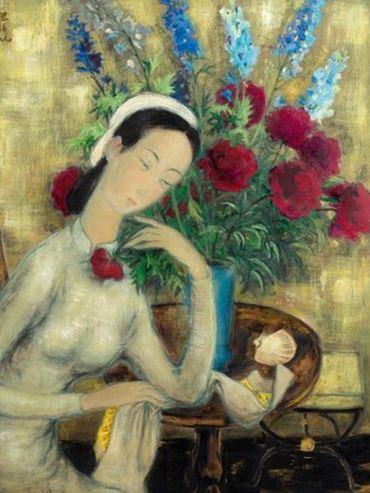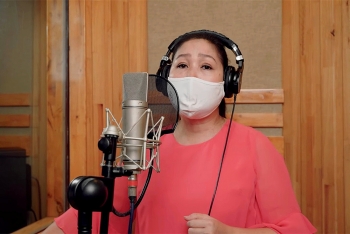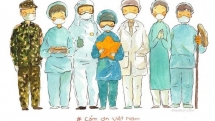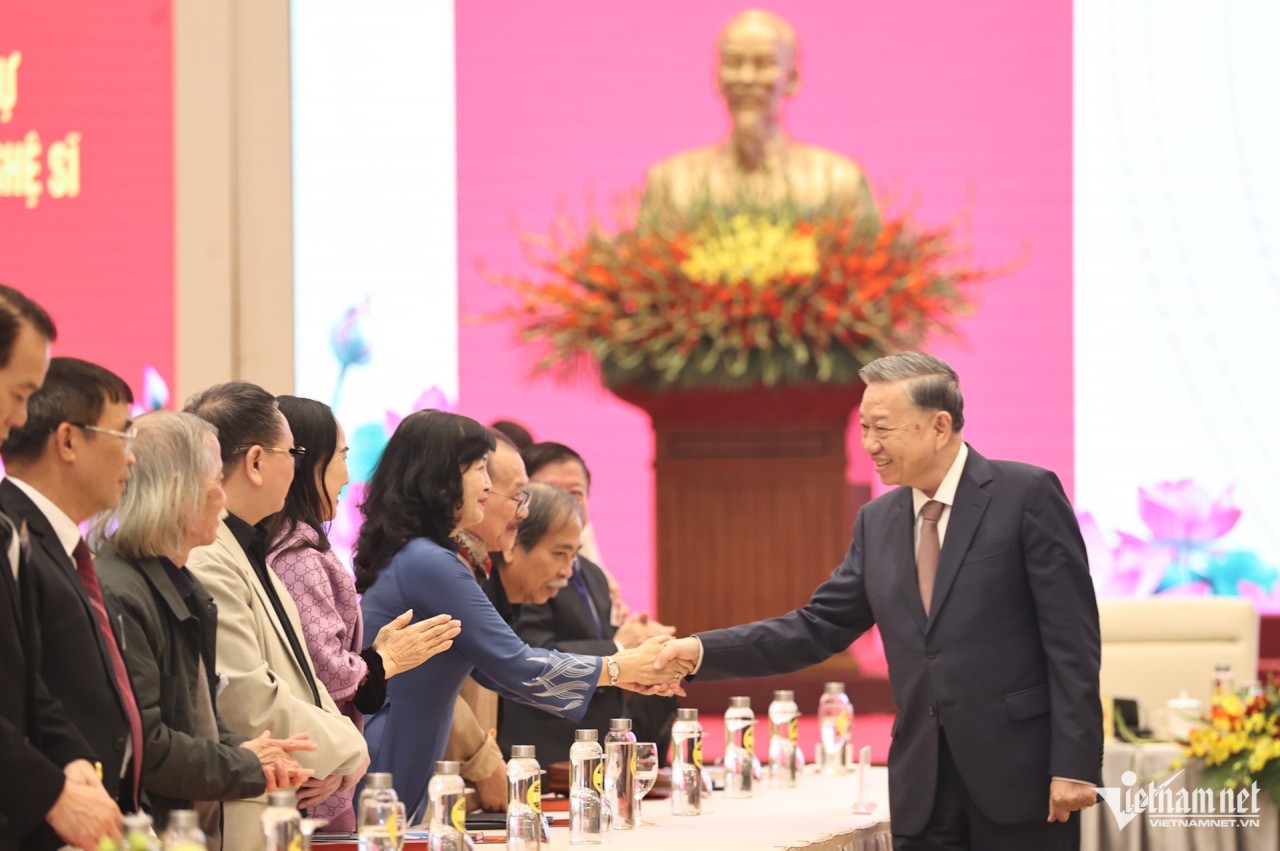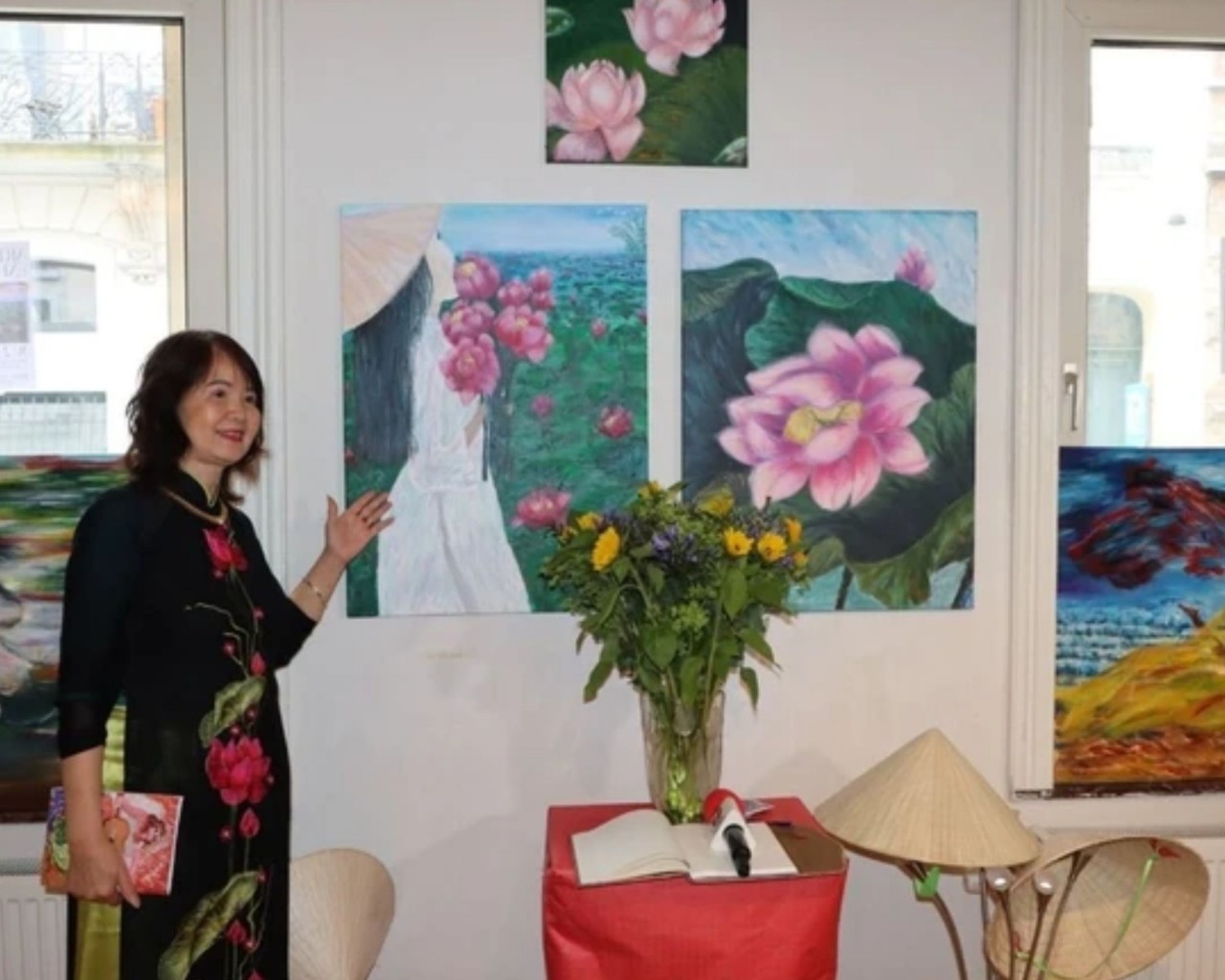Vietnamese 'Pioneer' octogenarian artist gets first solo exhibit
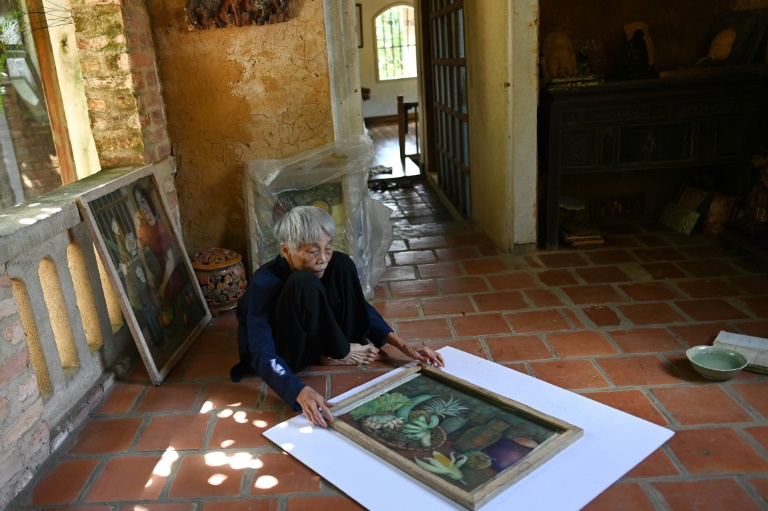 |
| 89-year-old Vietnamese artist Mong Bich has been lauded overseas for her work, but has been largely overlooked in her home country. Photo: the bangkokpost |
Aged almost 90, Vietnamese artist Mong Bich picks a spot on the tiled floor of her favourite room, checks the light and sits down to paint.
A "pioneer" who has inspired generations of women artists in Vietnam, Bich has won plaudits overseas and she has a watercolour in the British Museum's collection.
But for years she has been overlooked in her home country -- and has had to wait until this month for her first solo exhibition, said the bangkokpost.
"Painting is like eating rice for me -- I have to eat rice and I have to paint," Bich told AFP at her home on the outskirts of Hanoi, where she still works for up to eight hours a day.
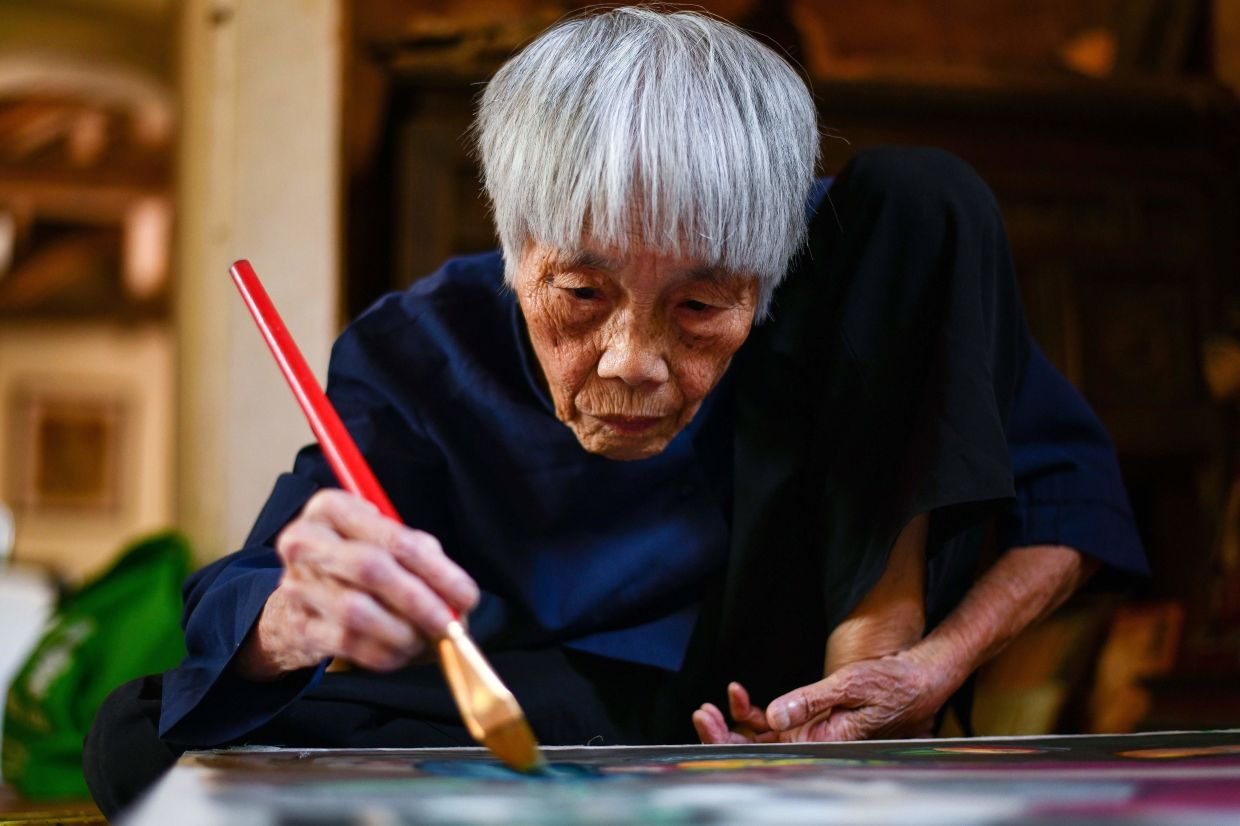 |
| Mong Bich specialises in silk paintings of daily life and ordinary people, women in particular, and ploughed a lonely furrow during many years of war when artists were steered towards the army or frontline workers as subjects. Photo: AFP |
At first, she had hesitated over holding a solo show, but her children encouraged it.
"I do not want to sell my work so I did not see the point. My paintings are my memories," she said ahead of this month's opening in the capital.
Specialising in silk paintings of daily life and ordinary people -- women in particular -- Bich ploughed a lonely furrow during years of war against the United States, when artists were steered towards drawing soldiers or frontline workers.
"Portraits of individuals were not appreciated at that time, but they were Mong Bich's forte," said Phan Cam Thuong, an eminent art critic and researcher.
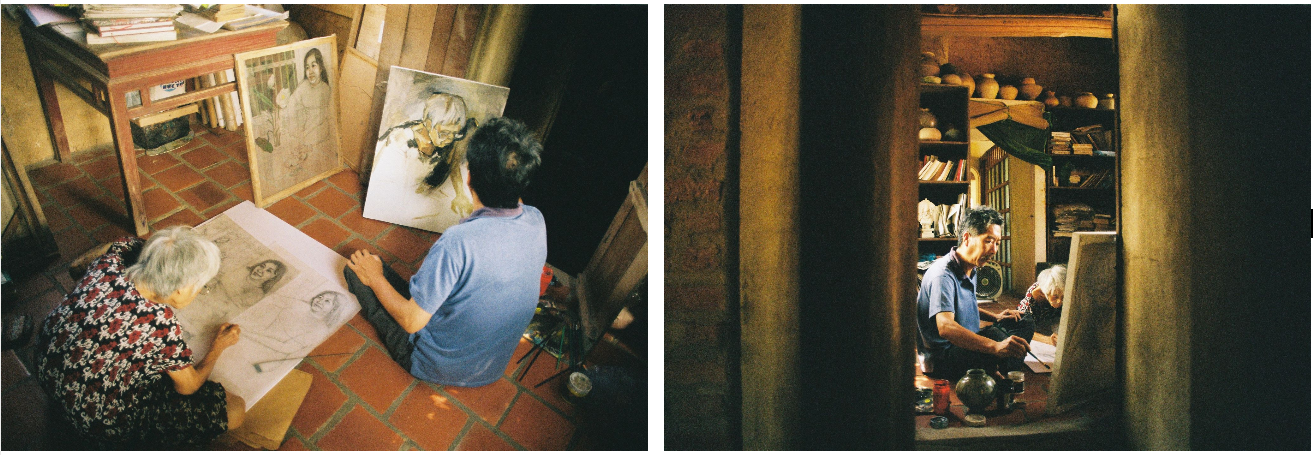 |
| Mong Bich and lacquer painter Tran Thanh in a painting session. Photos by Nam Son. |
- 'Painting is happiness' -
Born to a family of intellectuals in 1931 in Dong Ngac, north of Hanoi, Bích was inspired by her brother and his artist-architect friends, wishing to become a painter from a very young age. From 1945 to 1946, during the war against the French, Bích’s father left for a mission by order of the Ministry of Education and the rest of the family was evacuated to the region of Doan Hung. After the liberation of the capital in 1954, she returned to Hanoi to work for two years at the Central Armistice Committee and began art lessons with Diệp Minh Châu. In 1957, she, along with a fresh cohort of selected students, studied painting at the newly reestablished Vietnam Fine Arts School — previously the École Supérieure des Beaux Arts de l’Indochine founded in 1925 by the French, and currently the Vietnam University of Fine Arts.
During the French colonial era, Bich spent decades caring for her husband, a violinist and independence fighter who was wounded fighting French forces in Laos. They lived in desperate poverty while she raised their two children.
Needing to earn a living, in 1956 she enrolled in one of the first classes of the newly opened Vietnam College of Art in Hanoi and took a job drawing propaganda cartoons for a newspaper.
But she never stopped sketching what she saw on the streets -- a poor, old woman curled up on the floor and a mother breastfeeding a baby, a drawing considered so scandalous it was initially removed from an exhibition in 1960.
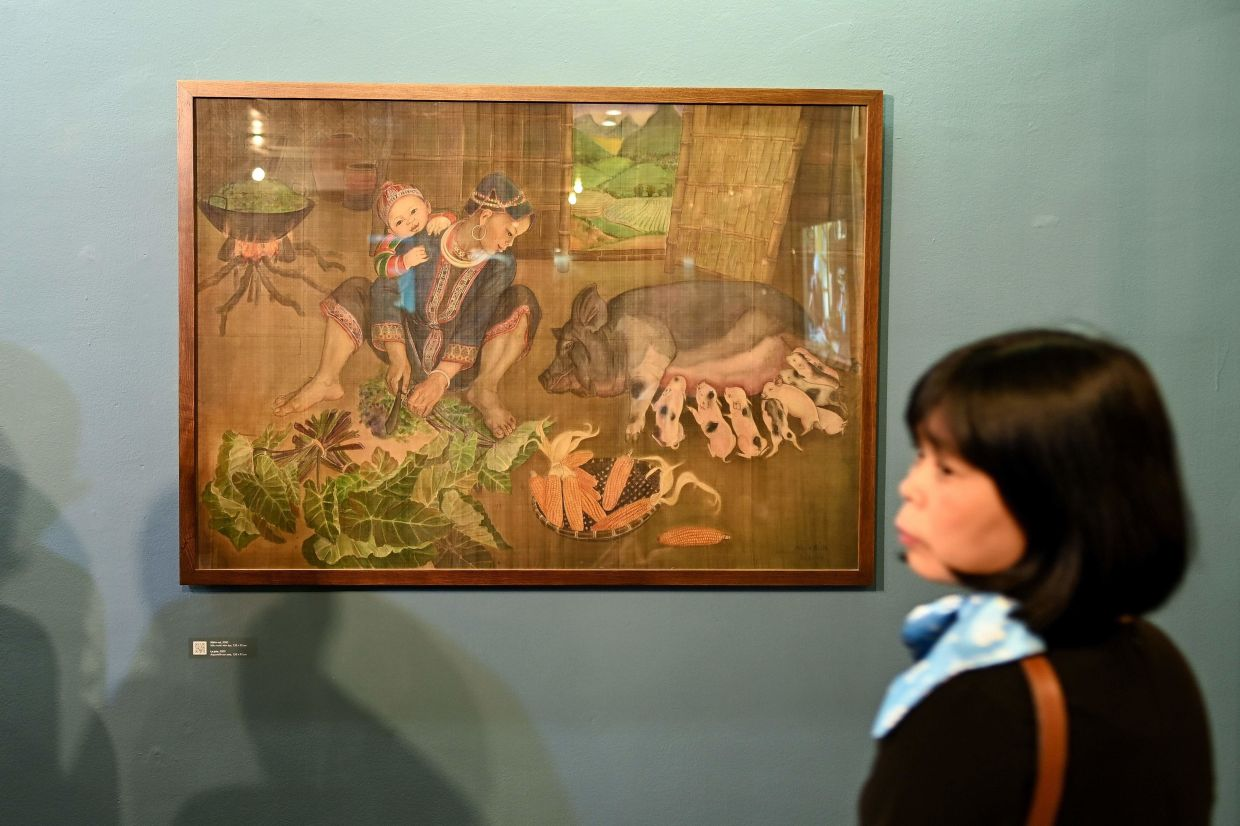 |
| A visitor looking at a painting by Mong Bich during the opening of her first solo exhibition at the French Cultural Centre in Hanoi. Photo: AFP |
"I paint on my own, in my style," she said. "Some may like my paintings, some not -- I really don't care."
Despite everything she had to deal with, her "pioneer spirit" shone through, and she persevered with her work, said Nora Taylor, professor of South and Southeast Asian art history at the School of the Art Institute of Chicago.
"I think many women subsequently looked up to her."
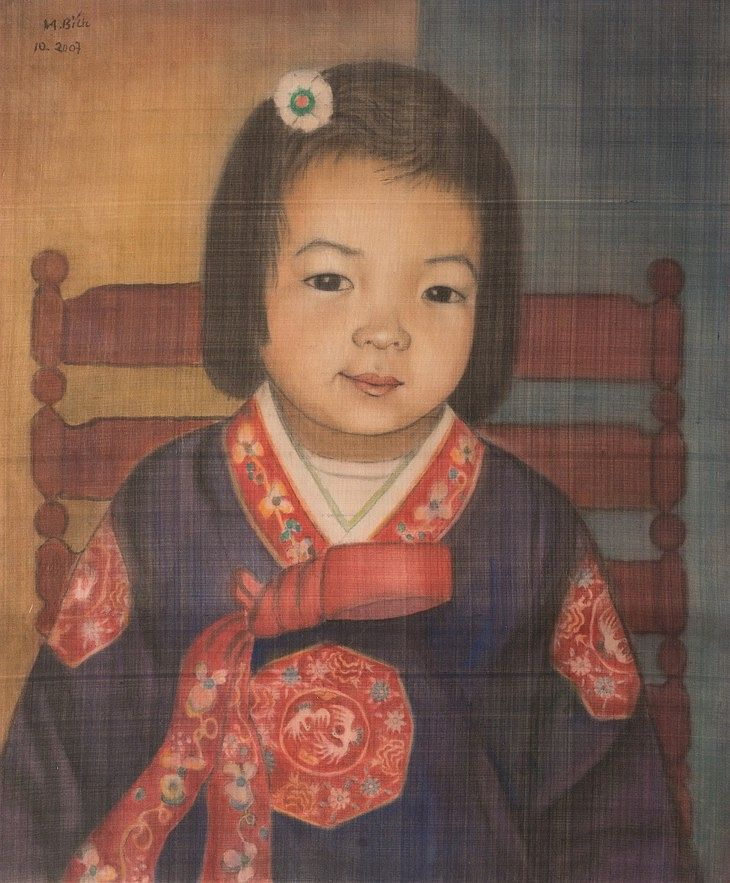 |
| The painting " A litte Korean girl" by Mong Bich. Photo: VOV |
Bich's watercolour portrait of an elderly woman seated on the floor won first prize in 1993 at the Vietnam Fine Arts Association Annual Exhibition, but fame did not follow.
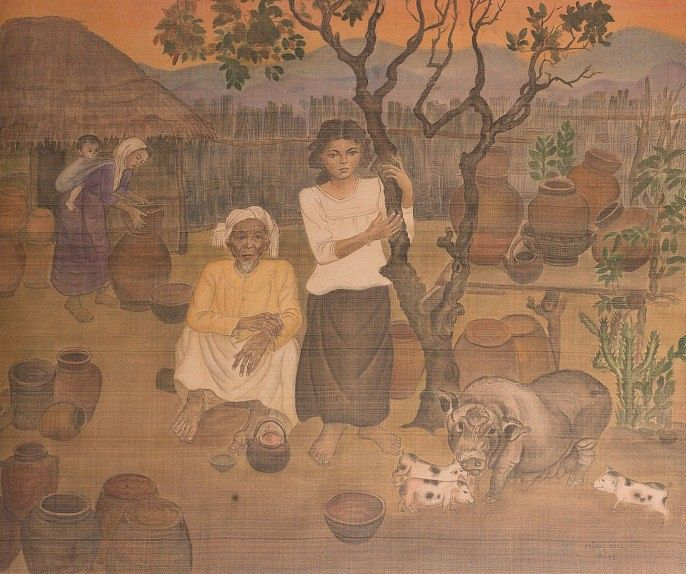 |
The lack of recognition is due to "a kind of erasure of women's contributions in Vietnam's art history, said Taylor, as happened across much of the world.
But that is finally changing, and there is growing acknowledgement that Bich's life, and her paintings, are testimony to what many went through in 20th century Vietnam.
"In many ways, her story is Vietnam's story. She did not have an easy life," said Thierry Vergon, director of L'Espace, the French cultural centre that hosted the Hanoi exhibition.
"There was a lot of pain, a lot of death but she kept going."
For Bich, her work has always been a way of coping with whatever life threw at her.
"Happiness was when I could make a sketch or a painting," she said.
"That was my way of dealing with life's difficulties."
In the catalog produced for the exhibition, her son, prolific painter Bui Hoai Mai, lovingly says: “The two centuries have been turbulent for the country as for painting. The painter Mong Bich stands aside from the turbulence, living her own reality and keeping her artistic soul intact. Her painting is neither a political tool, or a means of subsistence, nor a means of leaving a personal mark. For her, painting is simply the love of beauty and the perseverance behind the easel. Her life is the faithful portrait of a strong and courageous artist who dedicated her talent and her heart for art. Upheavals, whatever they may be, cannot alter that spirit.”
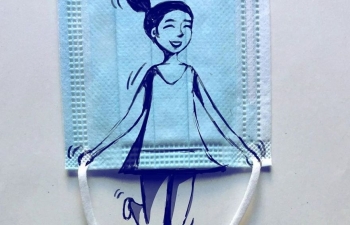 | Meaningful mask-inspired artworks from German artist Steffen Kraft, a German artist has creatively turned the familiar medical face masks into stunning and meaningful artworks. The mask-inspired illustration has garnered a lot ... |
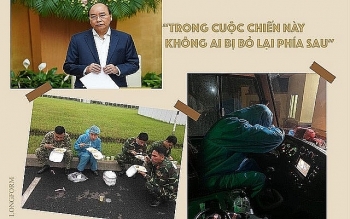 | Vietnam’s anti-COVID-19 ‘weapons’: Part 4, The eventful cultural and artistic front In less than 3 months since the entire population joining hands in the COVID-19 fight, many authors from folk to professional have composed thousands of ... |
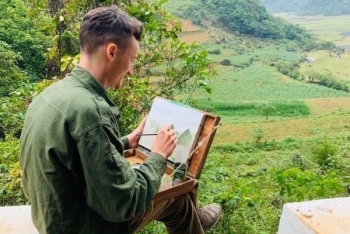 | An American artist in great love with Vietnam's moutainous areas With the love for the mountainous landscapes of Vietnam, the American artist Alex Hagendorf chose to reside in Cao Bang, northern Vietnam. Here, he can ... |
Recommended
 Handbook
Handbook
Vietnam Moves Up 8 Places In World Happiness Index
 Handbook
Handbook
Travelling Vietnam Through French Artist's Children Book
 Multimedia
Multimedia
Vietnamese Turmeric Fish among Best Asian Dishes: TasteAtlas
 Handbook
Handbook
From Lost to Found: German Tourist Thanks Vietnamese Police for Returning His Bag
Popular article
 Handbook
Handbook
Prediction and Resolution for the Disasters of Humanity
 Handbook
Handbook
16 French Films To Be Shown For Free During Tet Holiday In Vietnam
 Handbook
Handbook
Unique Cultural and Religious Activities to Welcome Year of the Snake
 Handbook
Handbook

